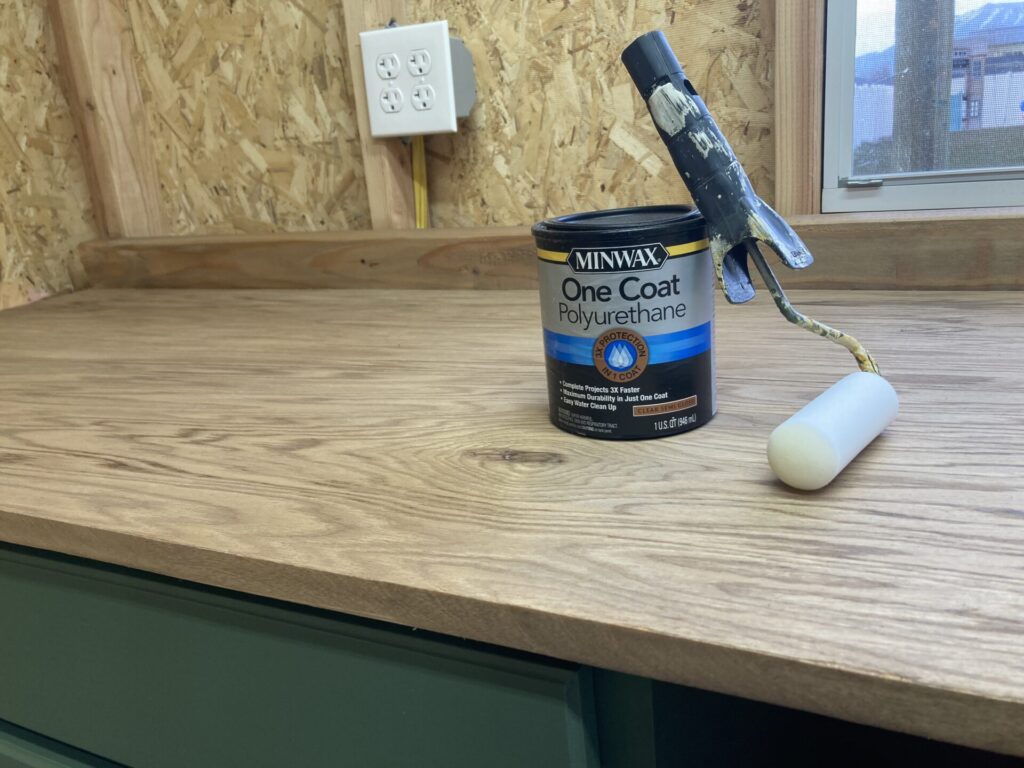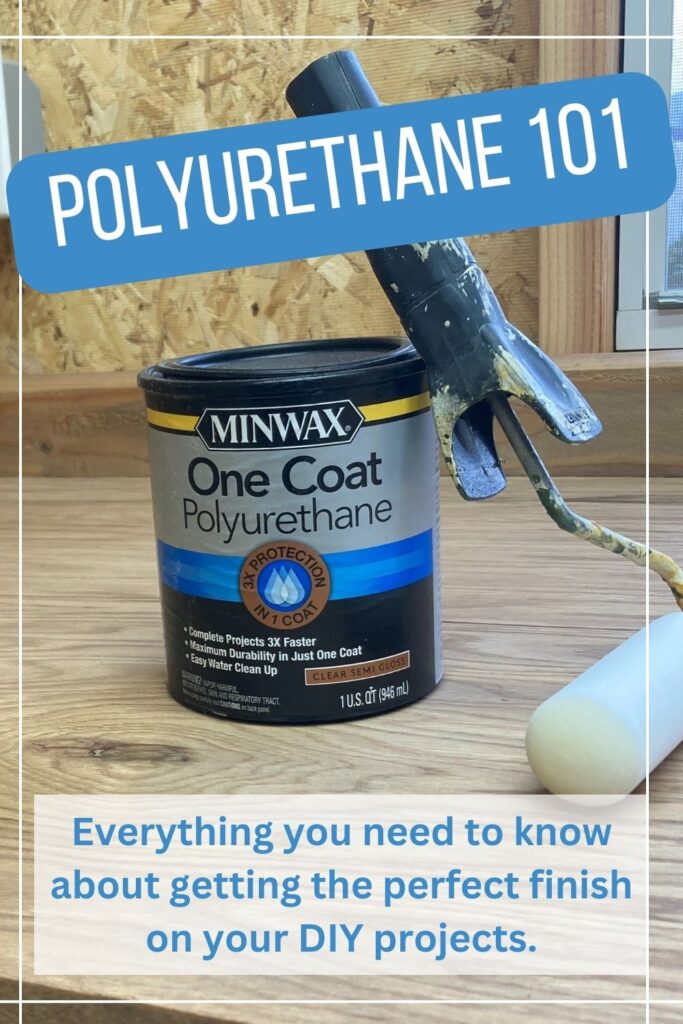The last thing you want to do is to ruin a project with a top coat. This post is packed with everything you want to know about using polyurethane as a top coat and getting that perfect finished to make your DIY projects shine.
Jump to where you want:
- Best Brush for Polyurethane
- Best Roller for Polyurethane
- Best Polyurethane For Floors
- Best Polyurethane for Kitchen Cabinets
- Best Water-Based Polyurethane
- How Do You Apply Polyurethane to Wood?
- Can You Put Oil-Based Polyurethane Over Water-Based Polyurethane?
Best Brush for Polyurethane
The best brush for applying polyurethane is typically a high-quality synthetic bristle brush.
A brush with fine bristles, such as a nylon or polyester brush, is ideal. These brushes are durable, hold the finish well, and provide a smooth application. Additionally, they are easier to clean compared to natural bristle brushes.
Look for a brush labeled specifically for use with polyurethane or other clear finishes for optimal results.
Here are a few I have used and loved:
Best Roller for Polyurethane
If you prefer a roller over a brush for polyurethane, opt for a high-density foam roller or a synthetic roller designed for smooth finishes. These rollers minimize bubbles and create an even application. Look for ones labeled specifically for use with clear finishes or polyurethane to ensure compatibility and a smoother finish on your wood surfaces.
Here are a few options to consider:

Best Polyurethane For Floors
The best polyurethane for floors often depends on your specific needs, but some reputable options include brands like Minwax, Varathane, Bona, and General Finishes. Consider factors like durability, drying time, odor, and sheen (gloss, satin, matte) when choosing. Water-based polyurethanes dry faster, have less odor, and won’t yellow over time as much as oil-based ones, but oil-based ones tend to offer greater durability and depth.
Here are a few great options to consider:
Best Polyurethane for Kitchen Cabinets
For kitchen cabinets, durability and a smooth finish are crucial. Water-based polyurethanes like General Finishes High-Performance Topcoat, Varathane Ultimate Polyurethane, or Minwax Polycrylic are great options. These options provide good protection against moisture, scratches, and stains while maintaining the natural color of the wood without yellowing over time.
Make sure to consider the sheen (matte, eggshell, satin, semi-gloss, gloss) when selecting the best polyurethane for your kitchen cabinets. Semi-gloss or glossy are most ideal for kitchen cabinets because they offer durablity and will be easier to clean.
Best Water-Based Polyurethane
Brands of water-based polyurethane to keep an eye out for are Bona, Minwax, Varathane, and General Finishes.
Bona Mega and Bona Traffic HD are often favored for their durability and clarity.
Varathane Ultimate Polyurethane is known for its durability and resistance to scratches.
General Finishes High-Performance Topcoat is known for its durability and excellent finish.
Ultimately, the best one for you will depend on factors like the type of wood, the desired sheen, and specific project requirements.
How Do You Apply Polyurethane to Wood?
How Do You Apply Polyurethane to Wood? Here are some simple steps to follow:
- Prepare: Sand the wood surface smooth. Completely clean off dust. Consider using a tac cloth.
- Apply: Use a quality brush to evenly apply polyurethane in long strokes along the grain. Let it dry.
- Sand & Repeat: Lightly sand with a fine-grit sandpaper (220+). Apply additional coats as needed, allowing each to dry between applications.
- Finish: Once dry, enjoy your beautifully protected wood!
Extra tip: when applying your polyurethane, avoid rolling/brushing over areas that have already begun drying. This will make your finish look streaky. The drying will start faster than you expect, so work quickly!
Can You Put Oil-Based Polyurethane Over Water-Based Polyurethane?
Can You Put Oil-Based Polyurethane Over Water-Based Polyurethane? Yes! You can apply oil-based polyurethane over a cured layer of water-based polyurethane.
But the keyword is “cured”. This may take somewhere between 30-60 days depending on the product you use.
Lightly sanding the water-based polyurethane can help with adhesion. Always perform a test in a small inconspicuous area to ensure compatibility and proper adhesion between the two products before applying over the entire surface.
Polyurethane 101
What will you be adding a top coat to? I hope this post helped answer some of the questions you have about polyurethane as a finish.
Happy DIYing!
Pin “Best Brush for Polyurethane & More to Pinterest”




